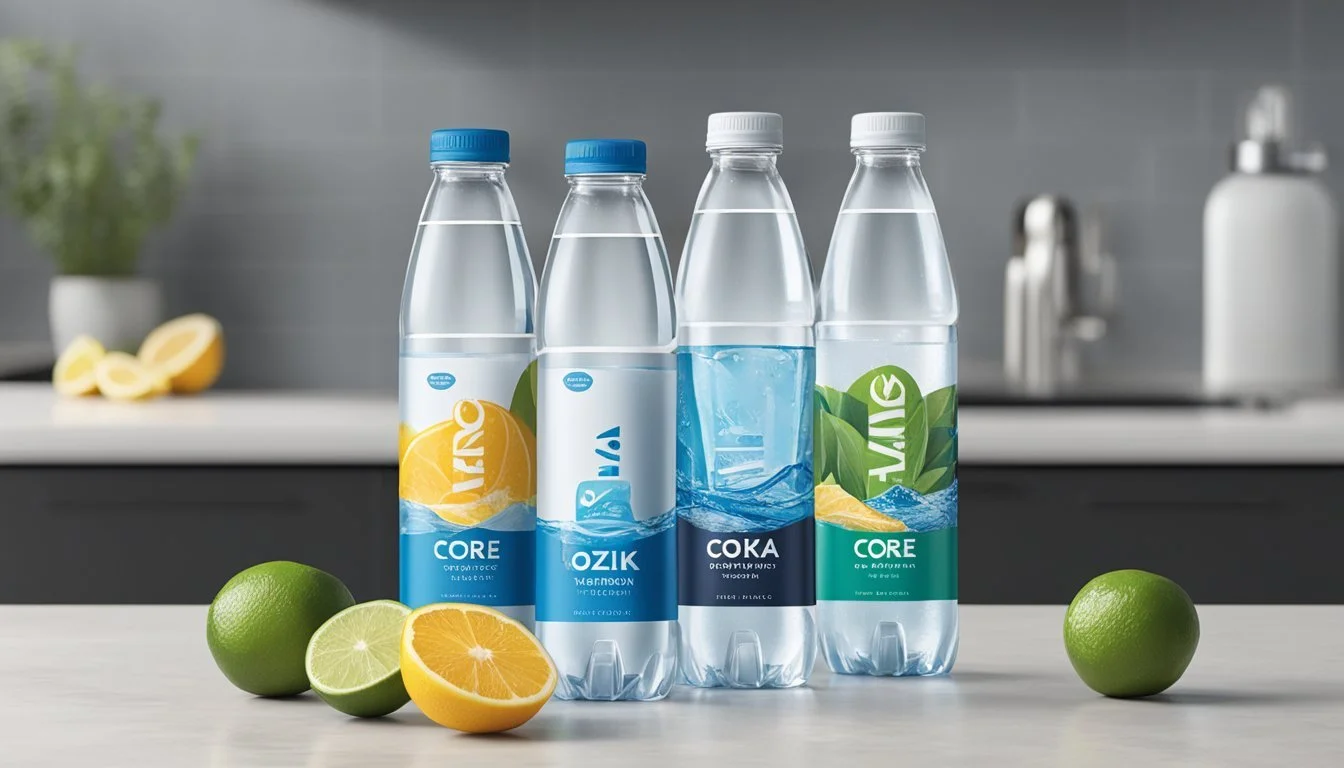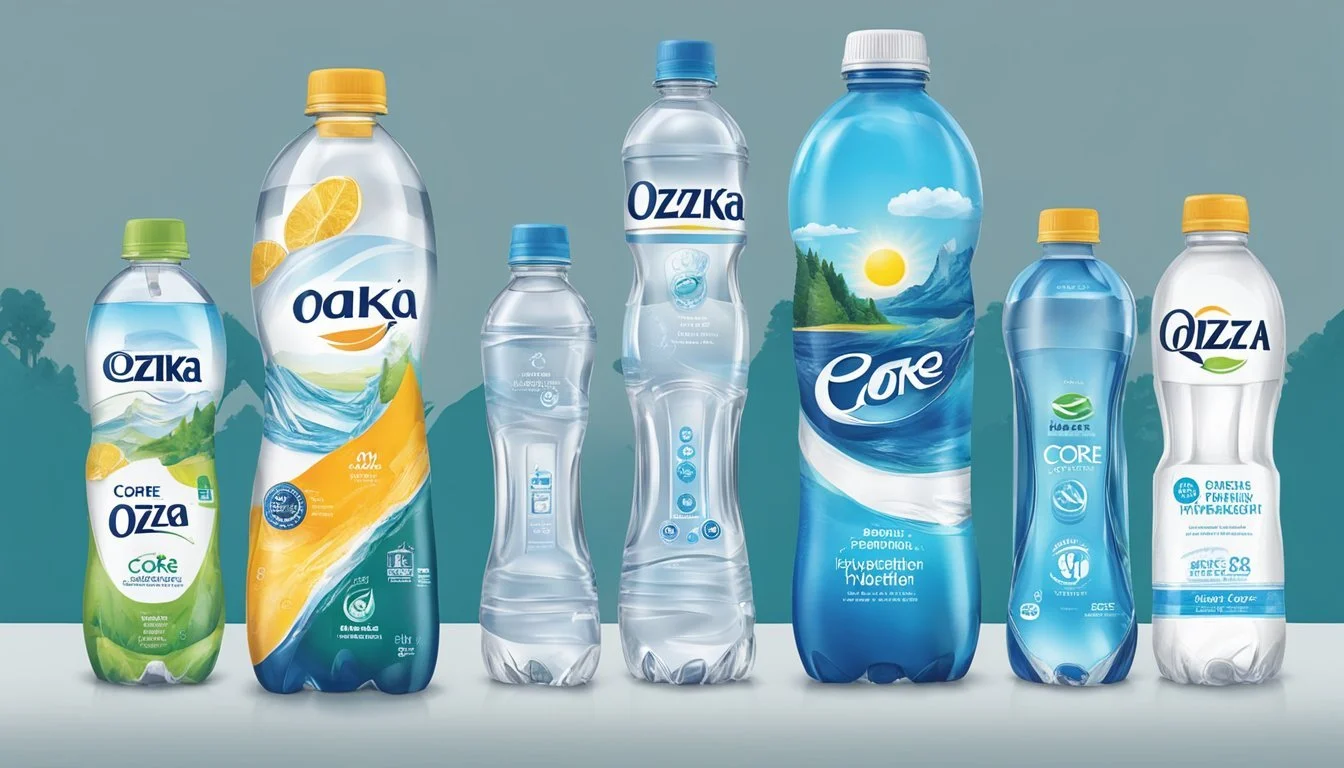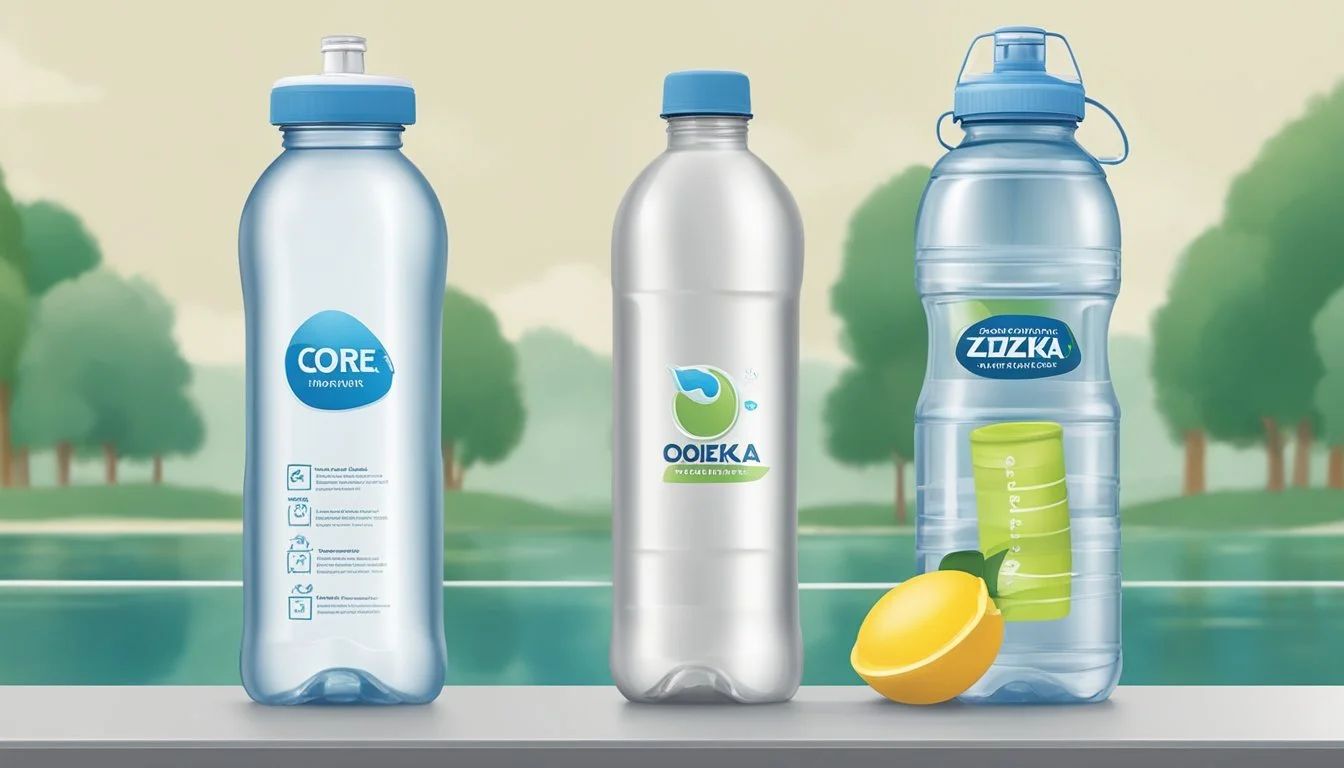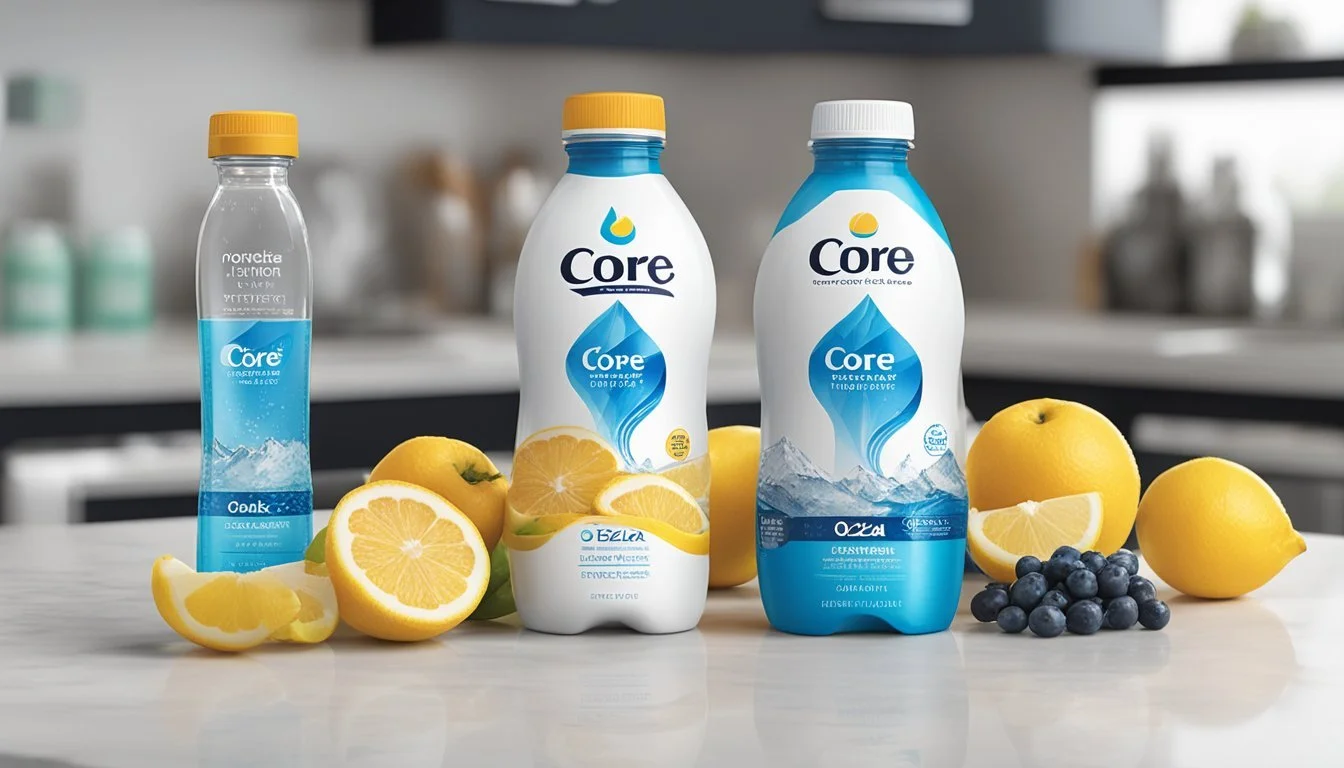Core Hydration vs. Ozarka
Comparing Quality and Taste
When it comes to bottled water, consumers often face a choice between various brands, each touting its own benefits and sources. Two such brands, Core Hydration and Ozarka, stand out in the market for their unique selling points. Core Hydration emphasizes its ultra-purified water that is balanced with electrolytes and minerals to match the body's natural pH. On the other hand, Ozarka, a brand that sources its water from natural springs in Texas, prides itself on offering a fresh taste that reflects its regional origins.
The debate on which bottled water is better is not just about taste preference but also encompasses factors such as sourcing, purification process, presence of minerals, and packaging. Core Hydration's appeal lies in its meticulous purification process and its focus on a balanced pH, which some consumers believe can offer enhanced hydration. Ozarka, conversely, draws consumers who appreciate natural spring water and a taste that's particular to its local sources.
Consumers also consider the environmental impact of their purchases, examining the materials used in the bottles and the sustainability practices of the companies. Packaging choices and commitment to environmental stewardship play increasingly significant roles in shaping consumer preferences between brands like Core Hydration and Ozarka. As such, choosing between these two brands extends beyond personal taste to the broader implications of health, environmental impact, and brand values.
Understanding Bottled Water
In the realm of consumer beverages, bottled water stands as a prevalent choice for hydration, offering various options to cater to differing preferences and needs.
Definition and Types of Bottled Water
Bottled water is typified as water that is packaged in plastic or glass bottles for individual consumption and retail sale. It comes in several principal types:
Spring Water: This is derived directly from a natural spring and must be collected at the spring or through a borehole tapping the underground formation feeding the spring.
Mineral Water: It naturally contains at least 250 parts per million total dissolved solids (TDS) and originates from a geologically and physically protected underground water source. No minerals can be added to this product.
Purified Water: Purified water refers to drinking water from any source that has been purified to remove any chemicals or contaminants. This category includes water that has been processed by distillation, deionization, reverse osmosis, or other suitable processes.
Alkaline Water: This type is characterized by its higher pH level compared to regular drinking water. Alkaline water can be naturally sourced or artificially produced by ionizing regular water to adjust its pH level.
Distilled Water: Water that has been boiled to steam and then re-condensed into a liquid. This process removes impurities and minerals from the water.
Water Source and Origin
The source of bottled water is a key factor in its classification and can influence its taste and quality.
Natural Spring Water typically comes from a naturally occurring spring which is often found in mountainous or hilly areas. It is collected directly from the spring or through a borehole.
Mountain Spring Water is a type of natural spring water specifically collected from springs located in mountainous regions, often touted for its purity and taste.
Groundwater sources are usually found in aquifers beneath the Earth's surface and can be tapped for use in bottled water.
Tap Water is essentially water supplied by a municipal system. While not bottled itself, it is often the starting point for purified bottled water options after undergoing various filtration processes.
By understanding the origins and types of bottled water, consumers can make more informed choices regarding their water preferences, weighing factors such as taste, mineral content, and the processing methods used to ensure safety and quality.
A Comparative Overview of Core Hydration and Ozarka
In the realm of bottled water, consumer choice often hinges on factors like the brand's history, the production process, and the water source. This section lays out a clear comparison between Core Hydration and Ozarka, focusing on these crucial aspects.
Brand History and Philosophy
Core Hydration was established with a health and wellness philosophy. It markets itself as a premium bottled water brand, tailored to deliver not just hydration but also an aligned pH and additional electrolytes.
Ozarka, on the other hand, roots itself in a rich tradition, with history going back to 1905. It emphasizes its local Texas heritage, offering Ozarka Natural Spring Water that they claim is as fresh and pure today as it was over a century ago.
Production Process
Core Water undergoes a meticulous seven-step purification process. This includes:
Reverse osmosis
Ultraviolet light exposure
Ozone treatment
This extensive process aims to remove contaminants and impurities to produce water that is crisp and beneficial to the body's hydration needs.
Ozarka Natural Spring Water, however, is sourced from natural springs and goes through a careful selection process. This water is naturally filtered as it flows through layers of rock and sand, which lends it the minerals that give Ozarka its distinctive taste without the need for as extensive processing.
Water Source Comparison
Core Hydration prides itself on its ultra-purified water that’s free from impurities and contaminants. Although the exact source is not publicly emphasized, the brand's focus is on the purity and addition of electrolytes.
Ozarka sources its water exclusively from multiple springs in Texas. It boasts natural spring water that’s inherently balanced with a blend of minerals, giving it a refreshing taste:
Water Source Core Hydration Ozarka Type Ultra-purified Natural spring water Known For Added electrolytes and balanced pH Natural minerals and refreshing taste Origin Not specified Texas springs
It's crucial to note that while Core Hydration seeks to add healthful benefits through its enhancement process, Ozarka Natural Spring Water relies on the natural environment, tying its brand to the geography and natural history of the area. Both waters cater to those seeking pure hydration, but with different appeals and underlying philosophies.
Water Quality and Composition
In analyzing Core Hydration and Ozarka bottled waters, their water quality and composition are critical factors. These elements can significantly affect the safety, taste, and health benefits offered by each brand.
pH Levels and Mineral Content
Core Hydration prides itself on having a pH that is perfectly balanced with the human body. Their water typically has a pH of 7.4, incorporating electrolytes and minerals for taste. On the other hand, Ozarka, sourced from Texas springs, presents a naturally occurring mineral content and its pH can vary, as natural spring water does, but generally stays within the ideal range for drinking water.
Core Hydration: pH 7.4
Ozarka: pH varies (acceptable for drinking water)
Taste Profile
The taste of bottled water is often influenced by its mineral content. Core Hydration is enhanced with electrolytes aiming for a clean and crisp flavor profile. Ozarka is known for its fresh and balanced taste, which may be attributed to the calcium, magnesium, and sodium found naturally in spring water.
Core Hydration: Crisp and clean
Ozarka: Fresh and balanced
Purity and Contaminants
The purity of bottled water is paramount, and both brands adhere to strict standards. Core Hydration undergoes a 7-stage purification process that includes UV light, reverse osmosis, and ozonation to ensure it is free from contaminants, lead, arsenic, heavy metals, and fluoride. Ozarka adheres to sustainable practices and regularly tests for contaminants including PFAS chemicals, although natural spring water's susceptibility to contaminants is typically higher due to its environment.
Core Hydration: 7-stage purification process
Ozarka: Regular testing for PFAS and other chemicals
In summary, both brands offer high-quality water with specific attributes designed to enhance purity and taste, while ensuring essential minerals are present for a fulfilling hydration experience.
Health and Hydration
Selecting the right bottled water is important for maintaining optimal hydration and reaping potential health benefits. This section compares Core Hydration and Ozarka based on their electrolyte content and health benefits.
Electrolytes and Hydration
Core Hydration is known for its electrolyte-infused formula, which can be beneficial for replenishing vital minerals lost through sweat. Electrolytes such as potassium, calcium, and magnesium are key to maintaining fluid balance, supporting nerve function, and aiding muscle contractions. Ozarka, a natural spring water, typically contains naturally occurring electrolytes, although the levels may be less consistent due to the natural variation from its source.
Core Hydration: Electrolytes added for taste and hydration support.
Ozarka: Natural electrolytes that vary by source.
Health Benefits of Different Waters
Both alkaline water and mineral-rich waters, like the types offered by Core Hydration and Ozarka respectively, have their own purported health benefits.
Alkaline Water: Core Hydration boasts a pH that is perfectly balanced to match the body’s natural pH level. This can have a neutralizing effect on the body’s acidity, although scientific backing for other health claims is limited.
Mineral Water: Ozarka, sourced from springs, can provide essential minerals like calcium and magnesium. These are not only important for hydration but also contribute to bone health.
Comparison Table:
Aspect Core Hydration Ozarka Water Type Alkaline water Spring water Electrolytes Added for consistency Naturally occurring pH Level Designed to match body's natural pH Varies by source Mineral Content May contain fewer minerals High in essential minerals
It's important to choose a water that complements one's lifestyle and hydration needs. Each water type provides different benefits that may align with individual health goals.
Packaging and Environmental Considerations
In evaluating Core Hydration and Ozarka, packaging design and material, along with environmental sustainability, play critical roles in their market positioning and consumer perception.
Bottle Materials and Designs
Core Hydration bottles are predominantly made from plastic, featuring a contoured design that claims to enhance the drinking experience. The company emphasizes that the bottles are made of 100% recyclable materials, allowing them to enter the recycling stream and potentially be turned into new bottles or other products.
Ozarka, primarily sourced and sold in the Southwest of the United States, also uses plastic bottles, which are lightweight and designed for convenience. Ozarka has taken steps to reduce the amount of plastic in their bottles, creating bottles that are also 100% recyclable. Neither Core Hydration nor Ozarka uses glass bottles or boxed water packaging, which are seen by some as more environmentally friendly options.
Environmental Impact and Sustainability
Core Hydration focuses on using recyclable materials to lessen their environmental footprint, yet there are concerns about the actual rates of plastic bottle recycling and the resulting impact on ecosystems when these bottles do not reach recycling facilities.
Ozarka is part of a larger corporation with access to more resources for sustainability initiatives. They express a commitment to sustainable practices, such as managing water resources responsibly and investing in community recycling programs, but scrutiny still remains on the overall environmental impact of transporting and consuming bottled water.
Both brands face the challenge of improving sustainability in a market where recycling infrastructure and practices vary widely. The production and disposal of plastic bottles significantly contribute to environmental degradation, and while both brands encourage recycling, the life cycle of the bottles from production to disposal often undermines sustainability efforts.
Market Presence and Consumer Preference
In the bottled water market, brand recognition and consumer taste preferences play significant roles in determining a product's success. The following subsections explore the specifics of brand popularity and consumer reviews for Core Hydration and Ozarka.
Brand Popularity
Core Hydration, with its distinctively contoured bottles and pH-balanced promise, has carved out a niche for itself, leveraging the trend toward functional beverages. Ozarka, on the other hand, emphasizes its local Texas roots and natural spring source, resonating with a regional market that often takes pride in home-grown brands. Both brands compete with giants such as Evian, Fiji, Smartwater, Dasani, and Aquafina, each of which holds a formidable presence. Volvic is another known entity, particularly in markets that value water sourced from volcanic regions.
Brand Unique Selling Point Market Presence Core Hydration pH-balanced, electrolyte-infused Widely recognized niche brand Ozarka Texas-sourced spring water Strong regional presence Evian Origin from French Alps Globally esteemed Fiji Sourced from artesian aquifer in Fiji Internationally recognized Smartwater Vapor-distilled, electrolyte-enhanced Premium segment leader Dasani Filtered, mineral-added Mass market coverage Aquafina Purified municipal source, notable purity process Wide distribution Volvic Sourced from Auvergne volcanic region Specific market appeal
Consumer Reviews and Taste Preference
Consumer preference is often influenced by taste, which can be subjective and varies greatly. Core Hydration's reputation for taste is enhanced by its balanced pH and inclusion of electrolytes, which some consumers report provide a crisper, cleaner finish. Ozarka's flavor is often described as fresh and pure, likely attributable to its natural spring water source.
In contrast, brands such as Smartwater and Fiji are frequently highlighted for their taste in consumer reviews, partially owing to their unique purification processes and sources. Dasani and Aquafina, while widely available, occasionally receive mixed reviews regarding taste, with some consumers perceiving a difference due to added minerals or the flavor profile of purified tap water.
Though less commonly mentioned in the context of Core Hydration and Ozarka, Evian and Volvic are endorsed for their distinct mineral compositions and origins, which shape their respective taste profiles. Consumer preference ultimately hinges on individual taste, health perceptions, and brand loyalty.
Regulatory and Safety Standards
When choosing between Core Hydration and Ozarka bottled water, one must consider how each brand aligns with regulatory and safety standards. These measures ensure the provision of clean drinking water and protect public health.
FDA Regulations and Compliance
The U.S. Food and Drug Administration (FDA) requires bottled water to comply with stringent regulatory standards that are at least as strict as the Environmental Protection Agency's (EPA) regulations for tap water. Core Hydration and Ozarka must adhere to these federal regulations to ensure their bottled waters meet safety standards. The federal government mandates that these brands are subject to regular inspections, further supporting public health initiatives for quality drinking water.
Water Testing and Safety Measures
Core Hydration and Ozarka are required to conduct multiple tests per day to comply with both FDA and EPA requirements, which includes tests for coliform bacteria and other potential contaminants. For example, Ozarka water's testing frequency might be compared against that for tap water, ensuring that its bottled water is tested at least twice as often for bacteria and potentially up to 36 times more often depending on the volume.
Testing: Regular and rigorous testing are conducted
Microbiological purity
Chemical safety
Safety Protocols: Implemented to guarantee the elimination of contaminants.
The brands focus on providing clean drinking water and upholding safety standards that contribute to the overall public health efforts enforced by the federal government.
Cost and Accessibility
When considering bottled water options like Core Hydration and Ozarka, consumers often look at two key factors: cost and accessibility. These aspects can greatly influence purchasing decisions.
Price Comparison
Core Hydration is often positioned as a premium water brand, typically featuring a higher price point due to its electrolyte-enhanced formula and claims of ultra-purification. Prices may vary, but a single 30.4 oz (900 ml) bottle typically ranges from $2 to $3 at most retailers.
In contrast, Ozarka, sourced from springs in Texas, is priced more competitively. It is commonly found at a lower cost, partly because it is a regional brand with less extensive filtration processes. For similar volumes, one can expect to pay approximately $1 to $1.50 per bottle.
Market Availability
Core Hydration can be found nationwide in the United States. It is widely available in major grocery chains, convenience stores, and online retailers, making it accessible to a broad audience.
Ozarka water, however, is mostly distributed in the southern United States, particularly in Texas, Louisiana, and Arkansas. While it is accessible in those states, its presence in retailers outside the South is less prevalent. Consumers outside of the main distribution areas can still purchase Ozarka through online platforms, but market availability is more limited geographically compared to Core Hydration.
Conclusion
When deciding between Core Hydration and Ozarka bottled water, consumers should consider the source, taste, and added benefits of each brand.
Core Hydration is marketed as "ultra-purified" and is enhanced with electrolytes and minerals. It undergoes a rigorous seven-step purification process which includes reverse osmosis, ultraviolet light, and ozone exposure. This aims to remove impurities and improve taste.
Ozarka, on the other hand, is a spring water sourced from Texas springs. It provides a natural taste without the extensive processing. However, compared to Core Hydration, it does not tout additional electrolytes and minerals for enhanced hydration.
In terms of environmental impact, Core's emphasis on purification might signal more energy consumption during processing, while Ozarka's spring water suggests less processing but does raise concerns regarding the sustainability of spring water sourcing.
Here is a quick comparison table for clarity:
Feature Core Hydration Ozarka Source Artificially enhanced water Natural spring water Purification Seven-step purification process Natural filtration Added Minerals Electrolytes for optimal hydration None Taste Clean and balanced Naturally fresh Environmental Impact Potentially high due to processing Depends on sourcing
Consumers who prioritize added hydration benefits and a clean taste might prefer Core Hydration. Those who favor natural spring water with minimal processing might lean towards Ozarka. Each brand serves its audience with distinct qualities; therefore, the choice largely depends on personal preference and values.









